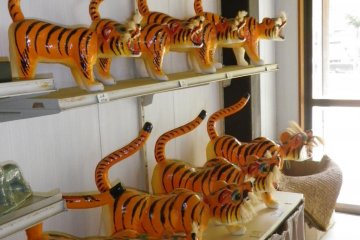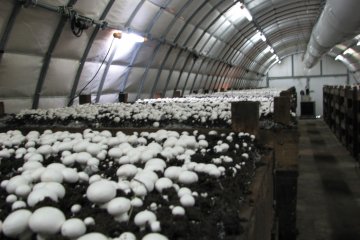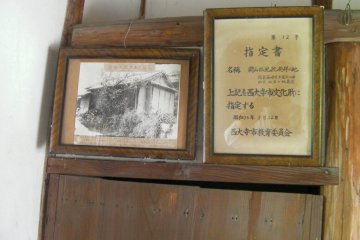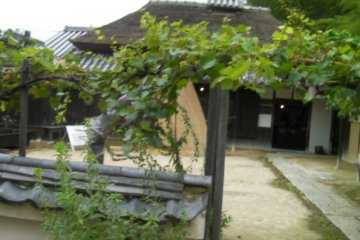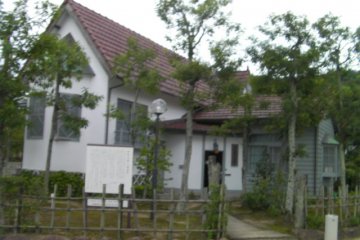There are three reasons why you should visit Yumeji Takehisa's birthplace in Oku town, Setouchi city. The first reason is that his art is breathtakingly beautiful and should be appreciated for its own sake. The second reason is that his birthplace allows visitors to look at a person's life from beginning to end, something that people rarely get the chance to do. The third reason is that upon inspection of Yumeji's life, it is clear that art spans all cultures.
Born in 1884 during the Meiji era of Japan, Yumeji grew up in a comfortable environment in a small village in Oku, Setouchi City, Okayama Prefecture. I often used to drive past the entrance to his birthplace, taking the shortcut from my house to get to Oku town's central shopping area. One day I decided to stop after having seen so many reproductions of Yumeji's paintings. I figured it was worth finding out who he really was. I wondered whether I would be able to tell from his origins why his paintings of elegant Japanese ladies sitting on park benches without a care in the world have come to represent Japanese modern art.
I followed the signs that led to the entrance of Yumeji's family home. It impressed me as having belonged to a wealthy farmer. With an expansive courtyard surrounded by a thick wall topped with black tiles, the home was traditional, even by 1884 standards. The carefully maintained thatch roof stood out, framing the picture of rustic living that Yumeji must have carried with him during his later travels throughout Japan, Europe and America.
As I entered Yumeji's birthplace I realized that the structure itself would not reveal the artist's secrets but I was starting to put a story together from the black and white photographs sprinkled throughout the house. There were a few pictures that spanned his entire lifetime. One that struck me was his grammar school photo because it was taken in Oku. The remainder of his schooling occurred outside of Okayama.
What was the Meiji period like? Well, in the school photo the boys were all dressed in kimono. There was also a photo of Yumeji with his young wife and child and it made me wonder when he had time to paint. I wanted to see more and was advised to visit the neighboring "youth mountain retreat" which contained more photos and a short video on his life.
The photos displayed in the retreat filled in the gaps left in my mind about the life of Yumeji. There was a photo of a young dapper Yumeji in his art studio in Kyoto wearing a fine suit and surrounded by his tools. With his long curly locks, he is looking down, smiling in a sort of "thinker" pose, clearly, having fun with the camera. It was unbelievable to me that the photo was taken in the early 1900s because it reminded of the days I spent with my artist friends from college.
There was another photo of Yumeji in Tokyo sitting on a curb, wearing a three piece suit with his hands in his hair. This look of "angst" was clearly staged but reflected an emotion shared by many artists over the centuries. As I looked over the photos of his experience in America and Europe I realized that his lifestyle was as bohemian as that of Lautrec, Munch or any other European artist he is compared to and that art is truly universal.



